How ethnic Japanese were forced into concentration camps in the United States after Pearl Harbor
Categories: History
By Pictolic https://pictolic.com/article/how-ethnic-japanese-were-forced-into-concentration-camps-in-the-united-states-after-pearl-harbor.htmlShortly after Japan attacked the US naval base Pearl Harbor, which marked the beginning of US involvement in World War II, President Franklin Delano Roosevelt signed Executive Order number 9066. This document gave the Minister of War the right to assign certain areas the status of a war zone and move people from these areas at his discretion.
Soon, literally everything within a hundred miles of the west coast was subject to eviction. The curfew and freezing of bank accounts extended to American citizens of Japanese origin. By May 1942, all Japanese and Japanese Americans were ordered to report to the assembly centers for "evacuation" to "resettlement centers", which in fact meant forced imprisonment in concentration camps.
About 120,000 Japanese Americans were forced to leave their homes, leave businesses, farms and property and queue up to be sent to remote and poorly equipped camps such as Manzanar, the largest Japanese internment camp.
(30 photos in total)
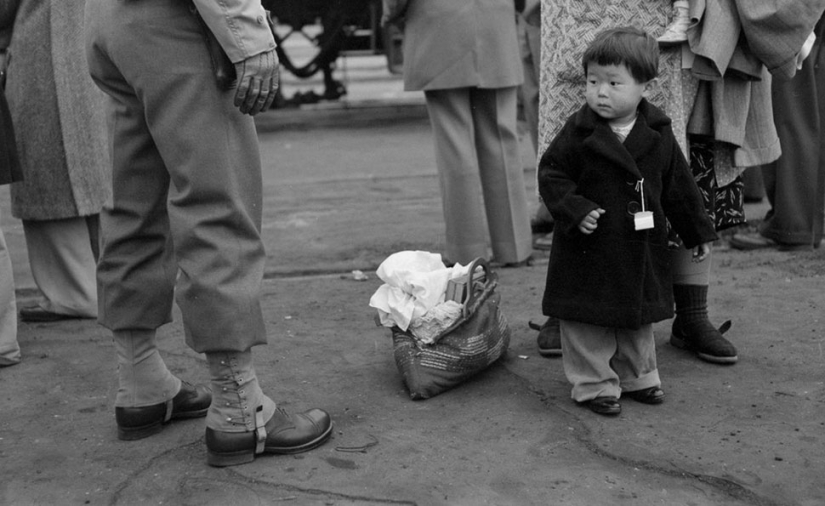 Source: Mashable
Source: Mashable
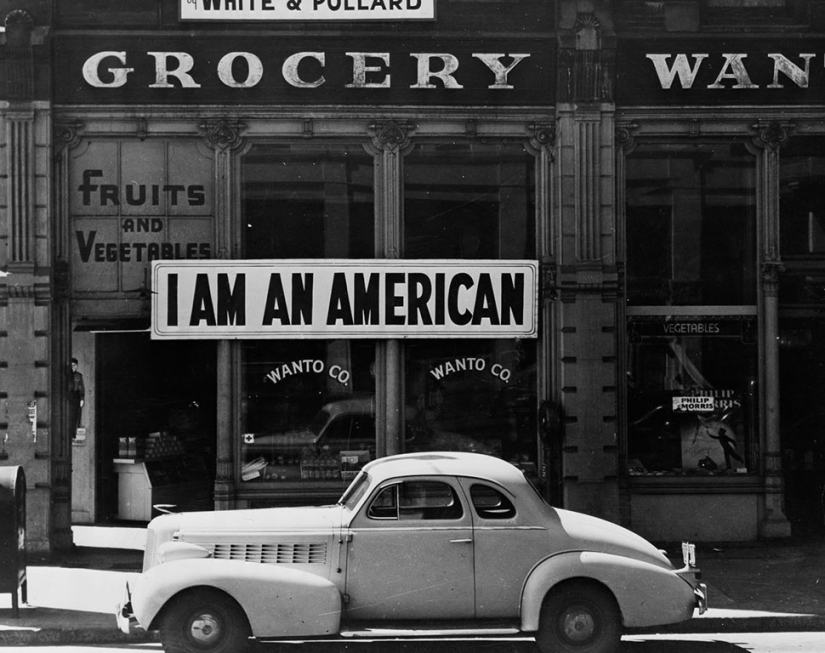
A store in Oakland, California, owned by an American of Japanese descent, with a poster "I am an American."
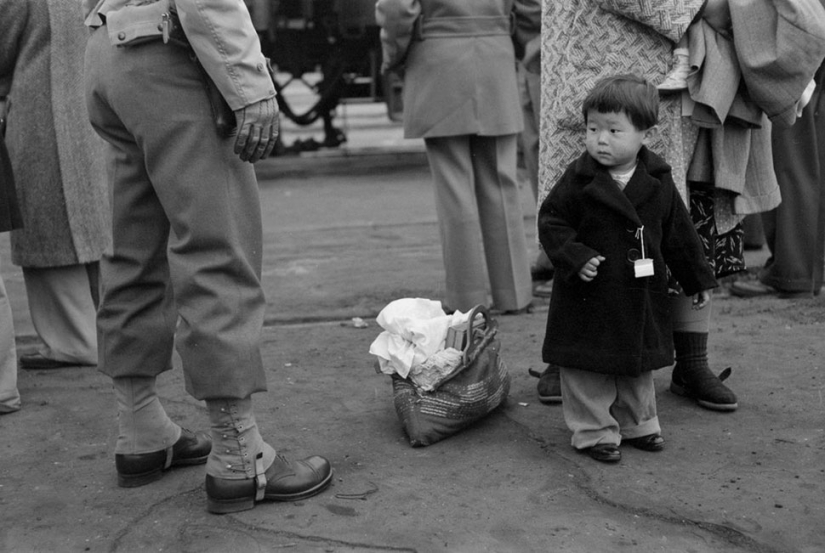
A child looks at a soldier who is collecting his family's belongings for forced evacuation.
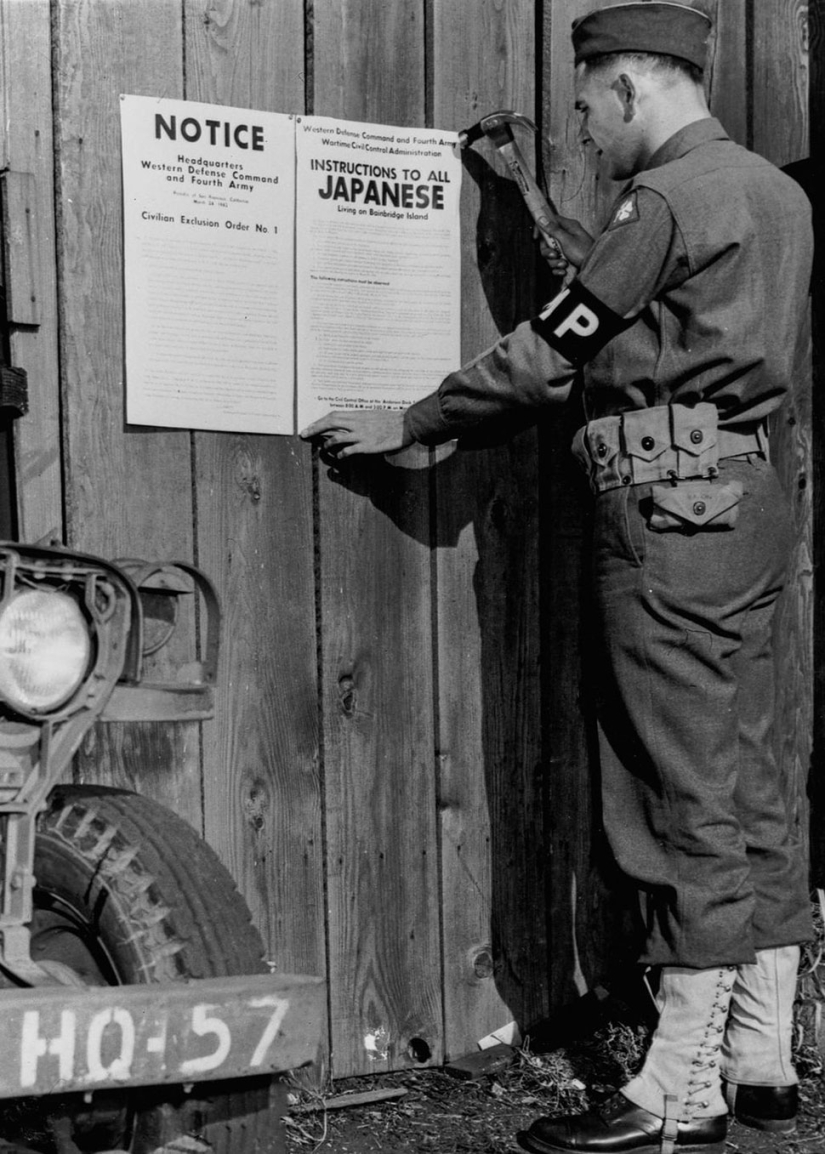
A military police officer posts a decree on the deprivation of the rights of a group of citizens number 1, which requires the evacuation of Japanese living on Bainbridge Island, Washington.
Mary Matsuda Grunewald

First-graders at a comprehensive school in San Francisco swear allegiance to the national flag before the evacuation begins.
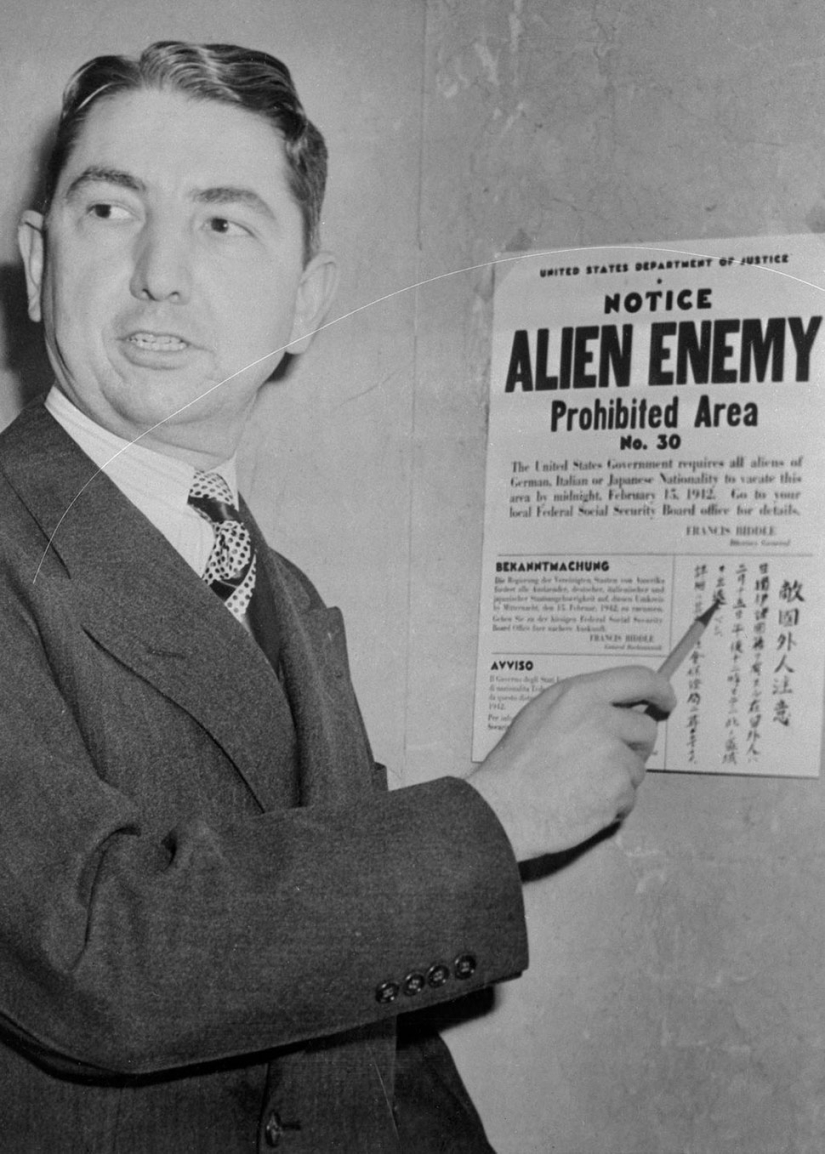
Tom Clark, coordinator of the program to control the subjects of a hostile state living in the country, launched by the US Western Air Defense Command.
Lieutenant General John L. Dewitt, final report on the Japanese evacuation from the West Coast in 1942
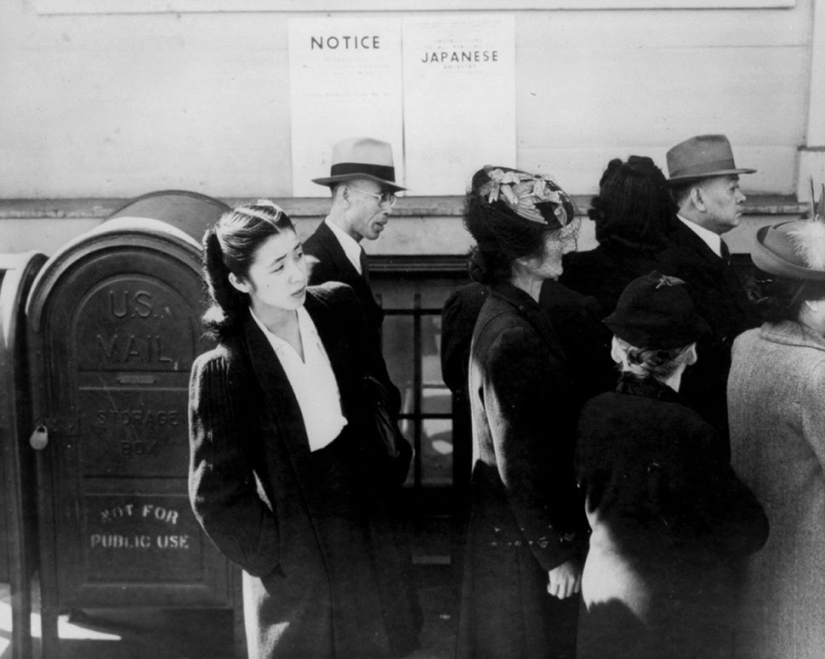
Japanese Americans in San Francisco are in line for evacuation and housing provision.
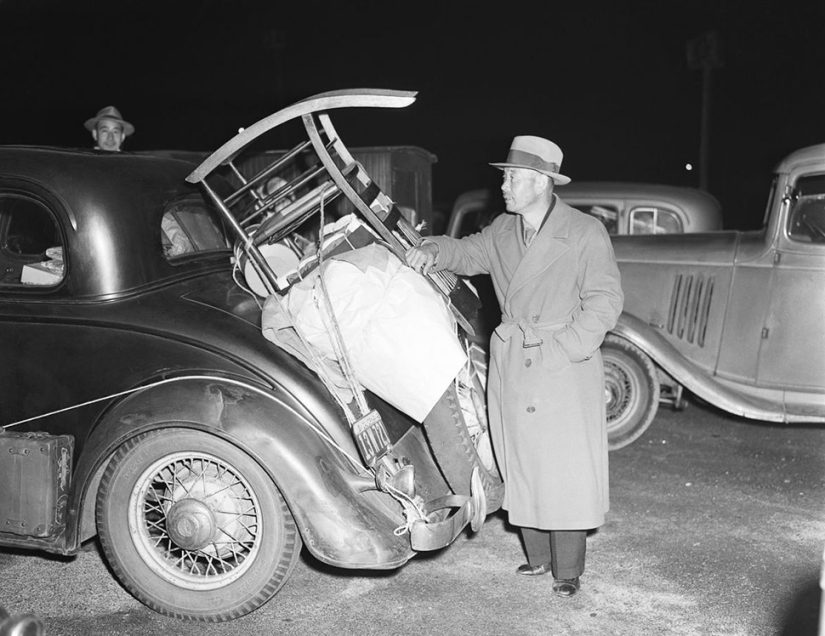
A man from Pasadena puts his things in the car to go to Camp Manzanar.
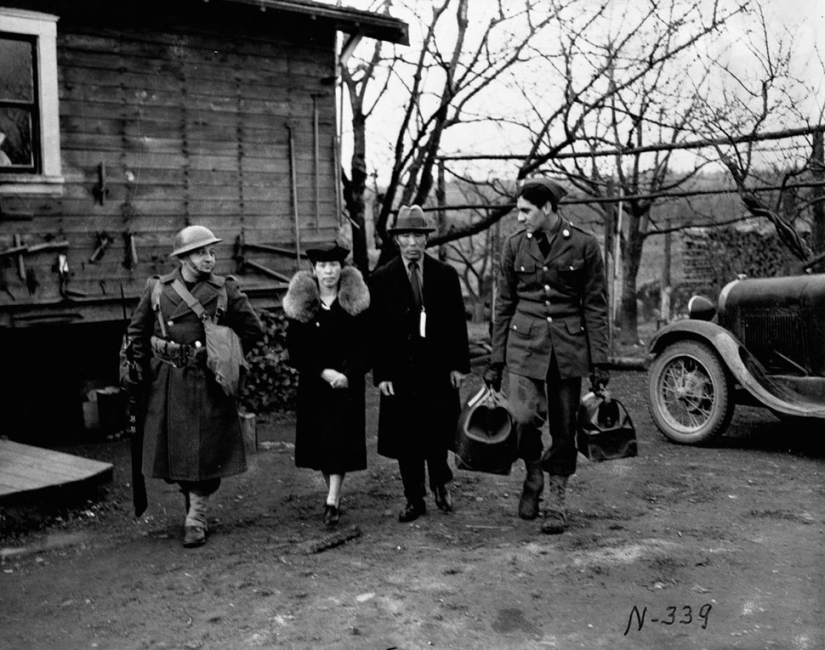
Soldiers escort an elderly couple of Japanese Americans out of their home on Bainbridge Island, Washington.
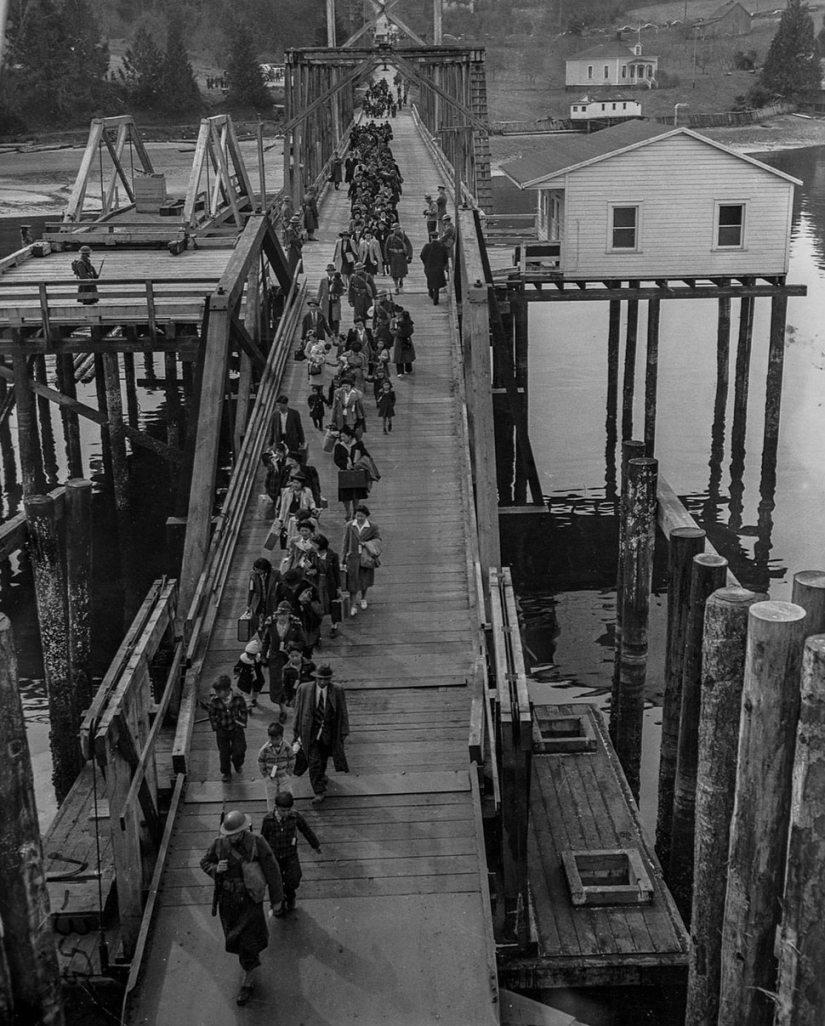
Japanese Americans and their accompanying soldiers walk across a bridge on Bainbridge Island, Washington.
George Takei
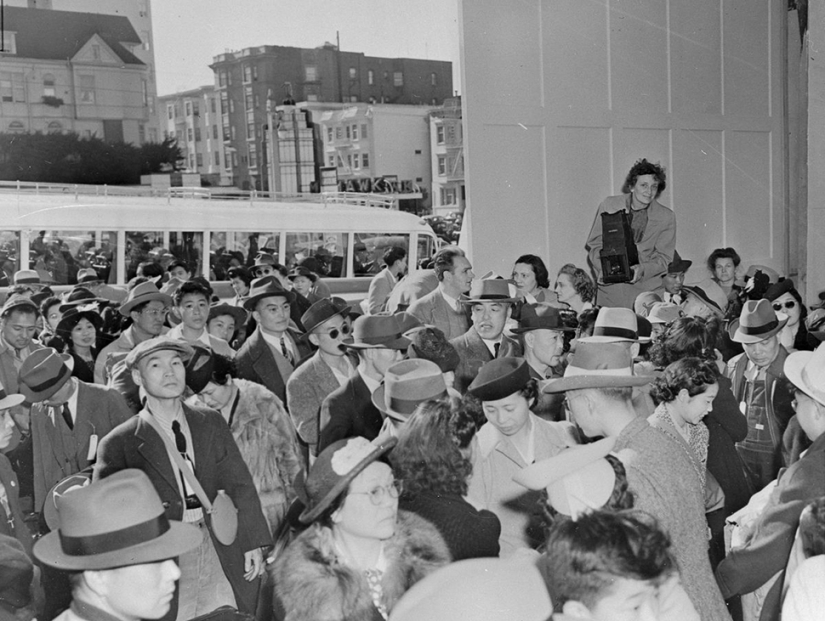
Japanese Americans gathered in San Francisco before being transported to the gathering place to then go to various resettlement centers. Photographer Dorothea Lang stands above the crowd.
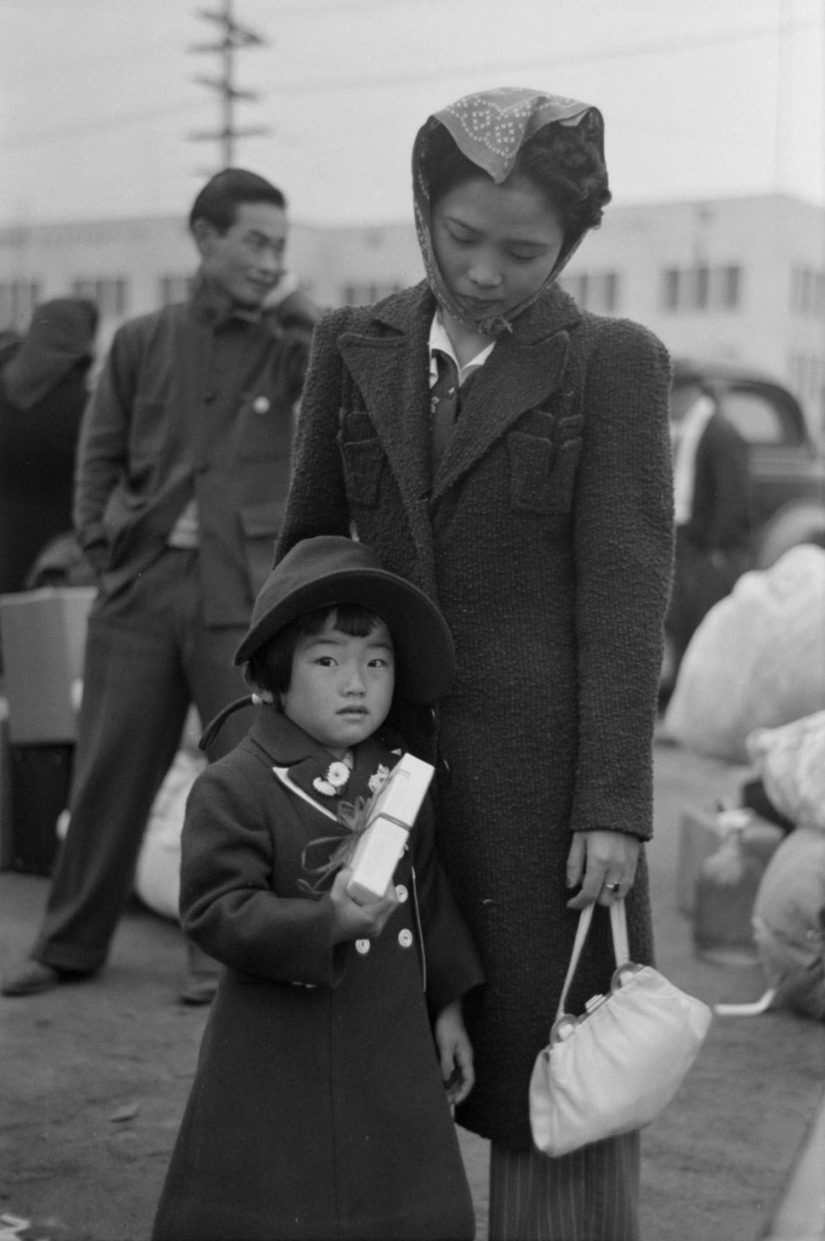
A mother and daughter are preparing to go to a camp at a train station in Los Angeles.
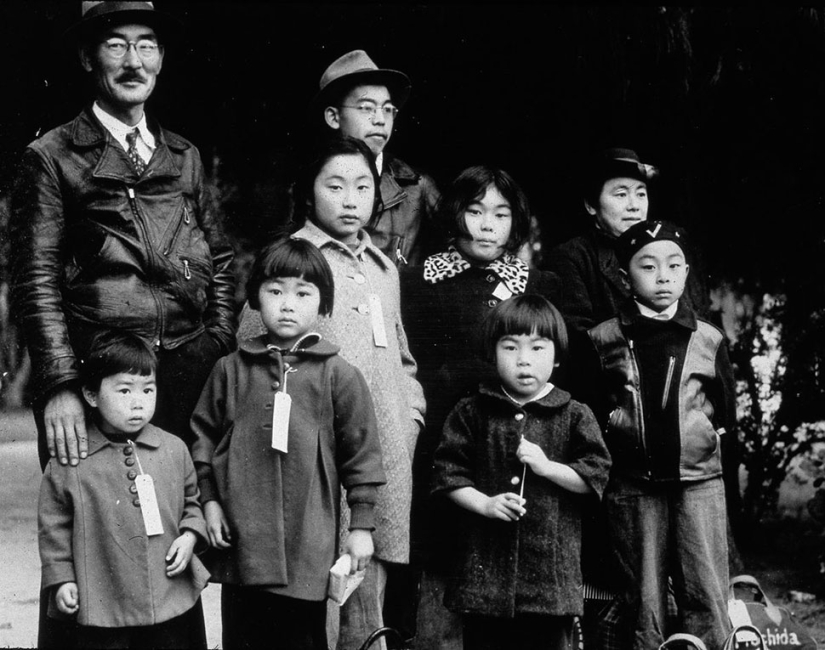
The Motida family from Hayward, California, is awaiting relocation.
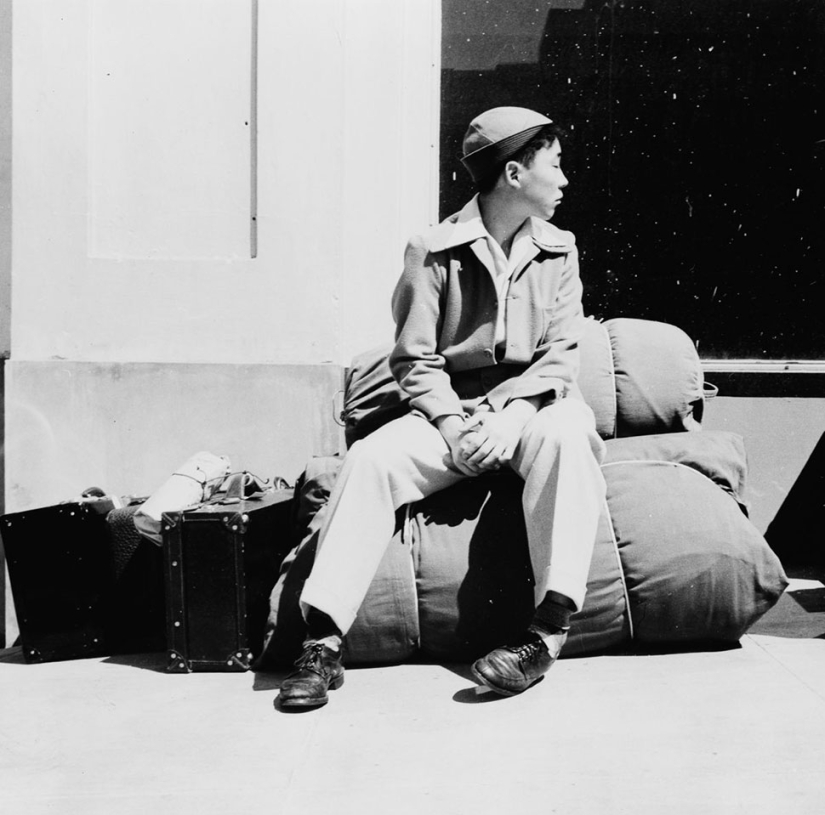
The boy is sitting on his belongings and waiting for relocation from San Francisco.
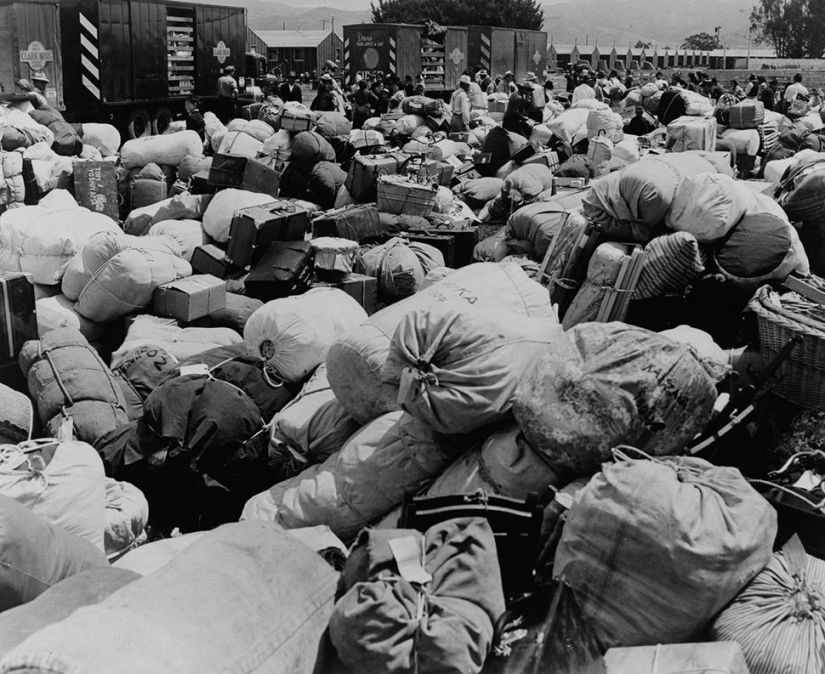
The migrants' luggage is collected for transportation to the collection center in Salinas, California.
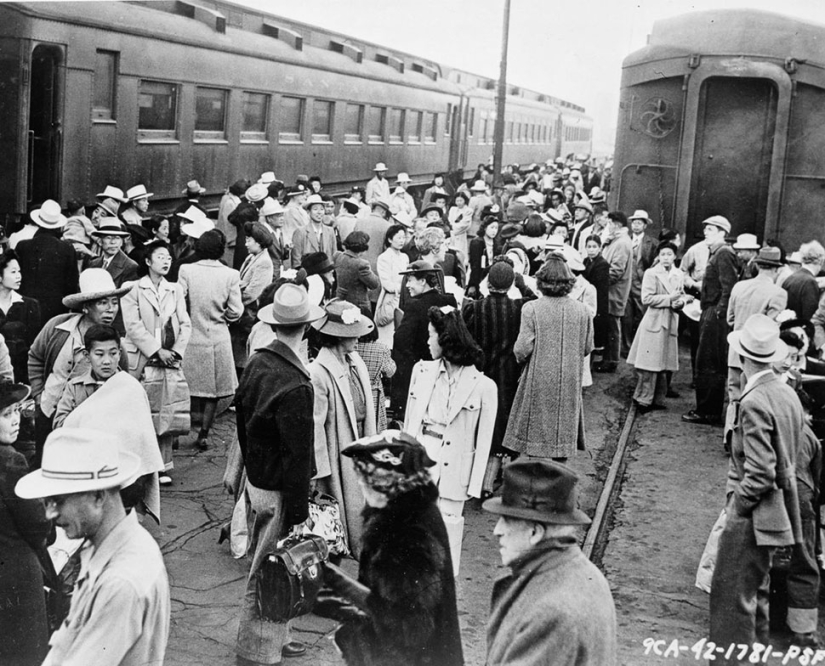
Evacuees gather at a train station in Los Angeles.
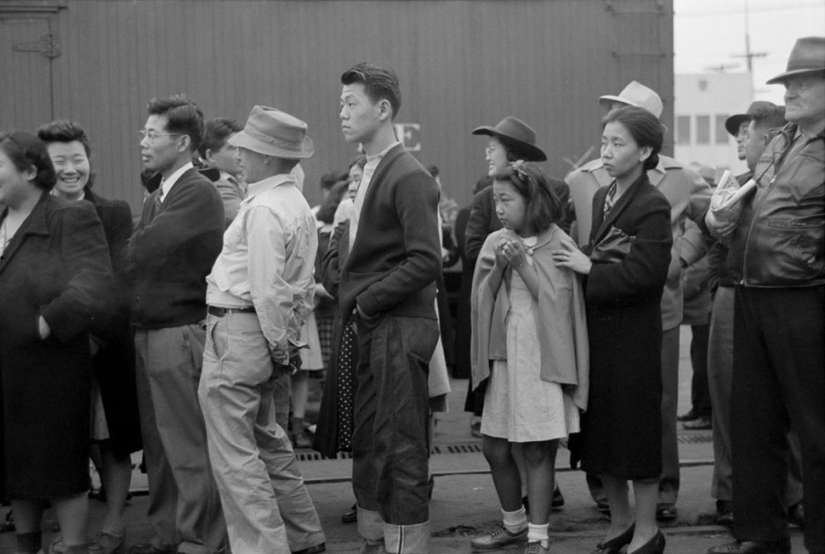
Migrants in Los Angeles watch as trains take their loved ones to the Owens Valley.
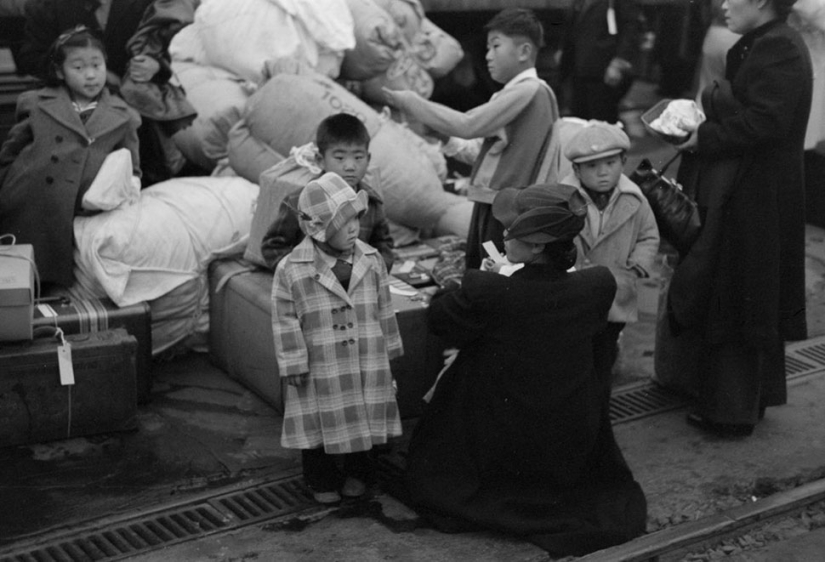
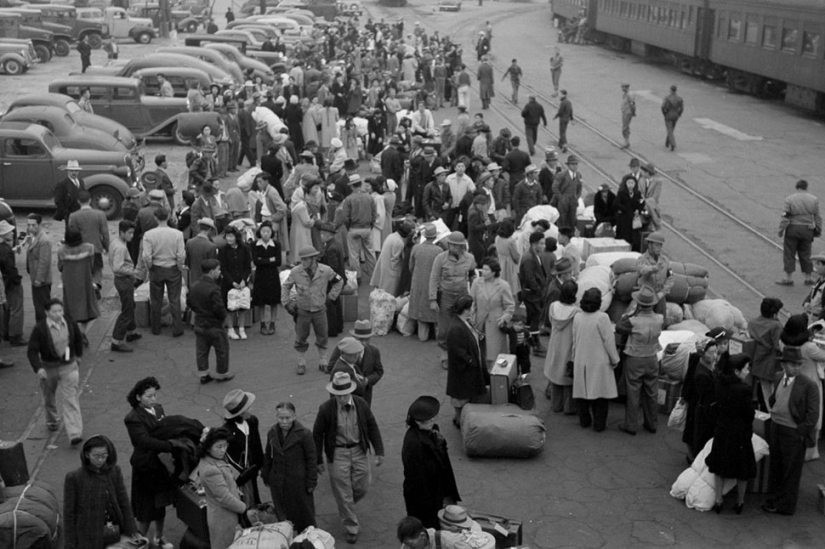
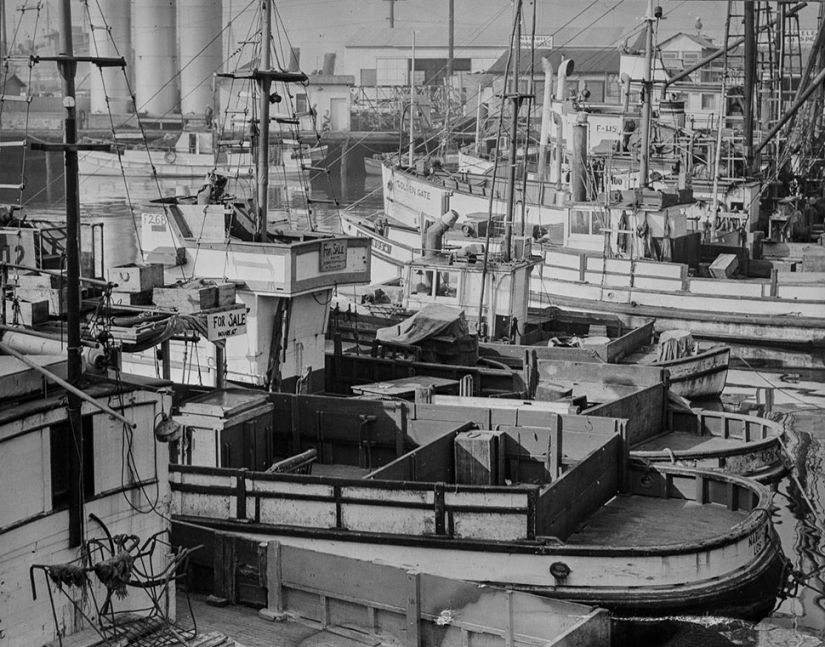
Fishing boats belonging to Japanese Americans stand empty in the port of Los Angeles.
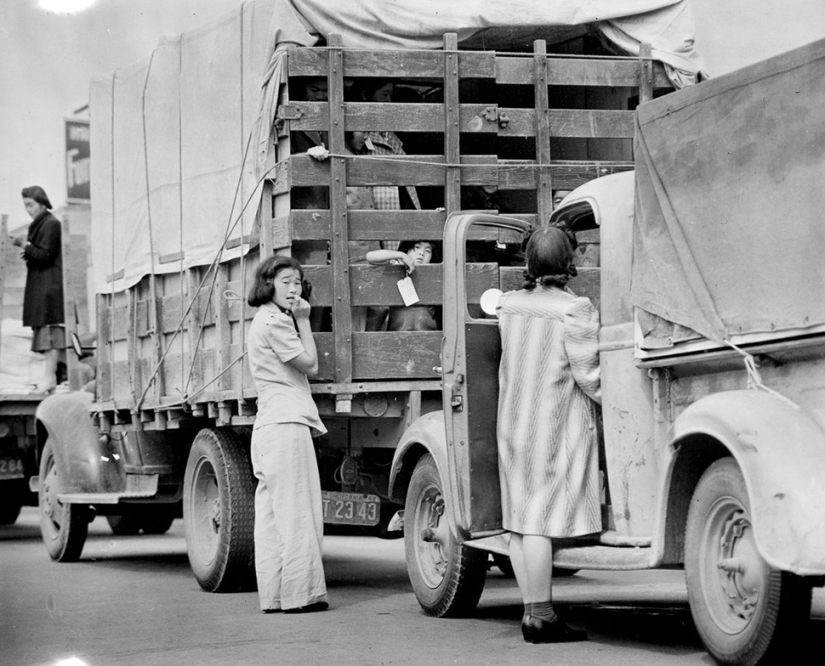
The last residents of Redondo Beach of Japanese origin are being taken out by trucks.
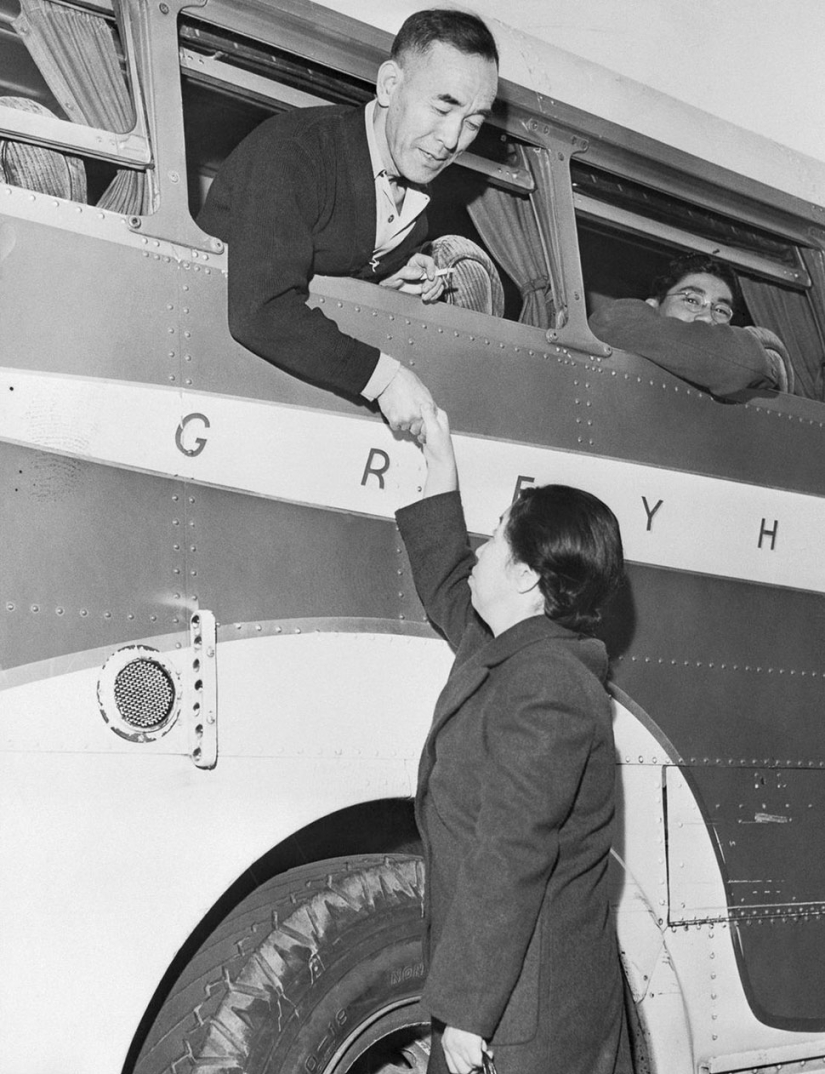
The engineer says goodbye to his wife before going to camp Manzanar.
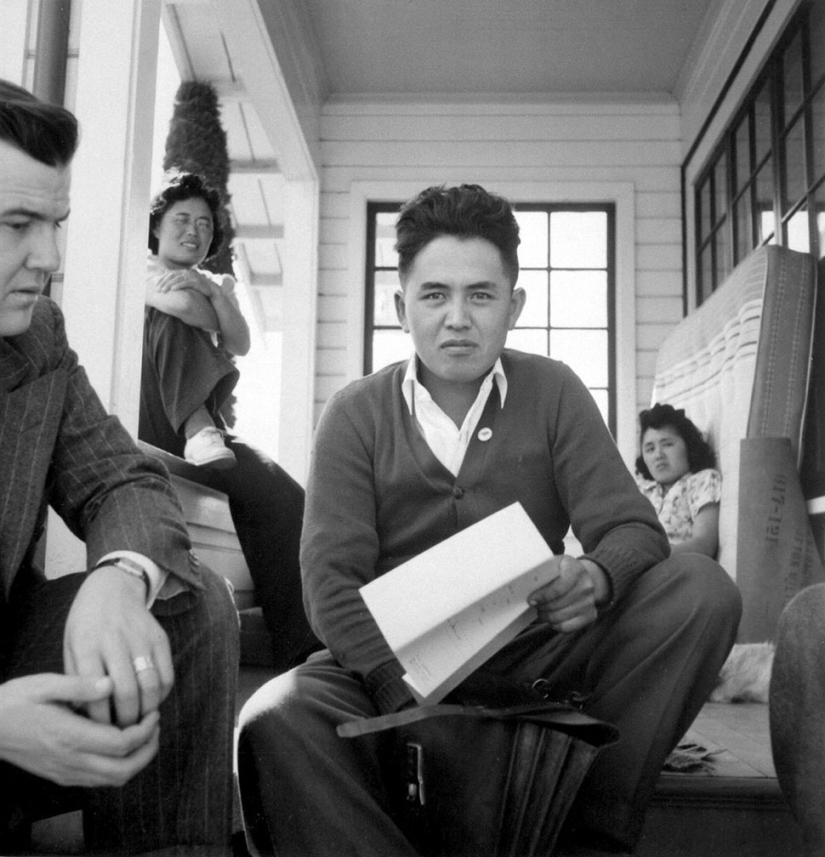
John Abbott, an investigator for the Tolan Committee on Migrants at Congress (left), speaks with a young farmer who has just settled the lease of his celery farm during his evacuation.
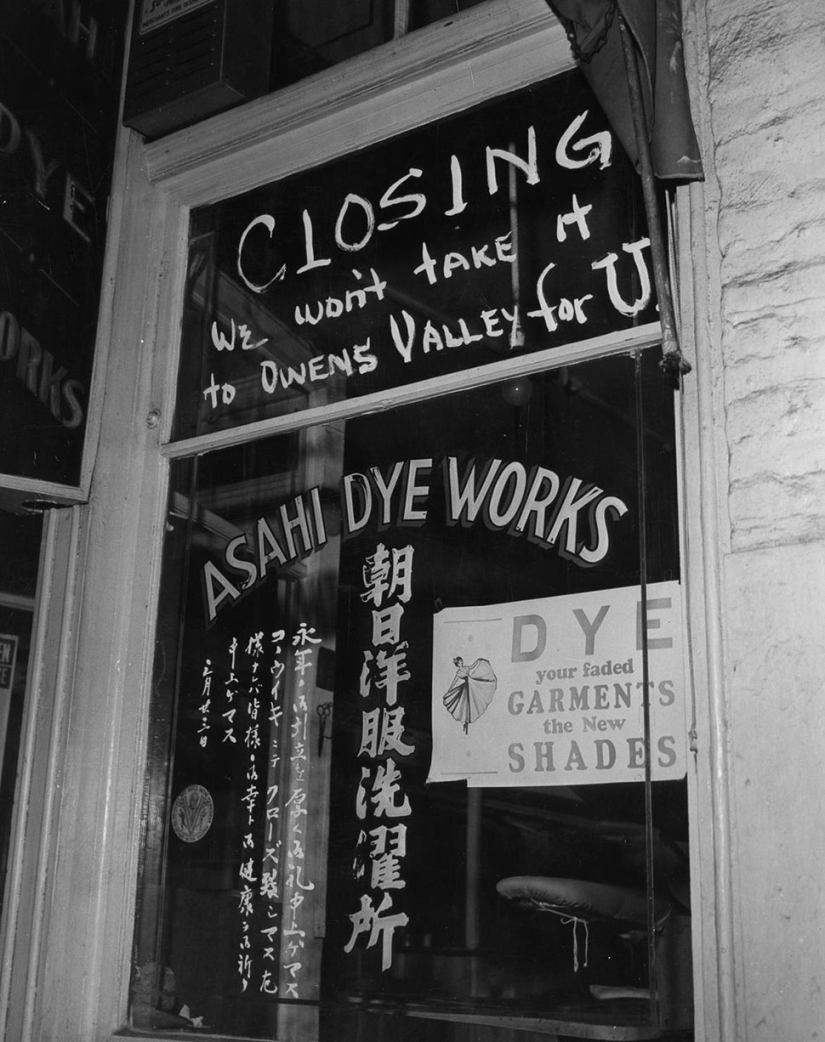
A dry cleaner owned by Japanese Americans. The inscription reads: "We're not taking this with us to Owens Valley for you."
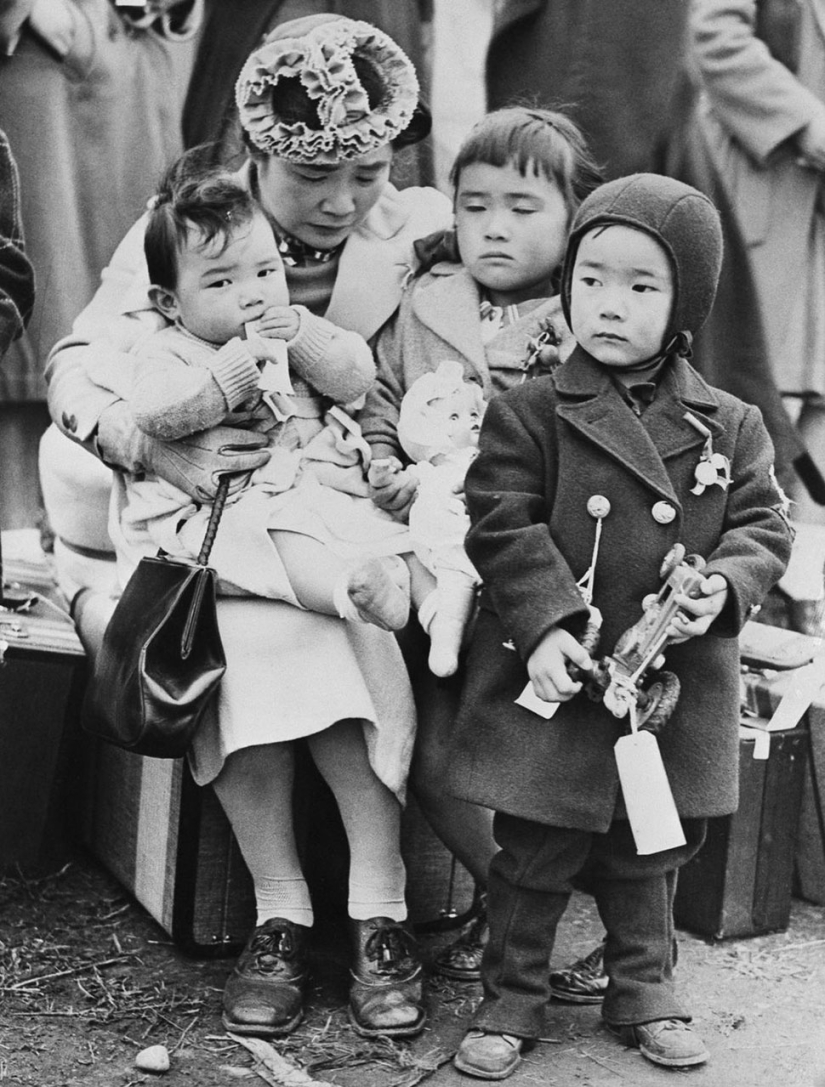
The family is waiting for the ferry to Seattle on their way to the relocation camp.
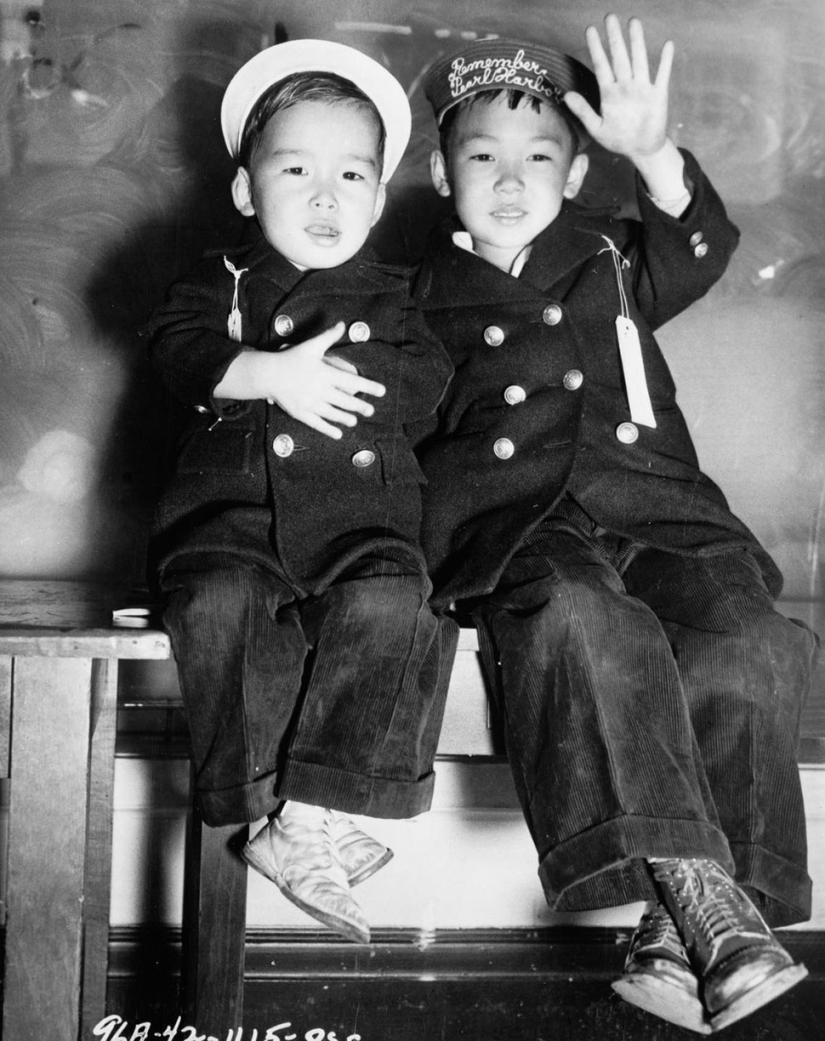
Boys from San Francisco wave goodbye while waiting for buses to the camps. One of them is wearing a cap with the inscription "Remember Pearl Harbor".
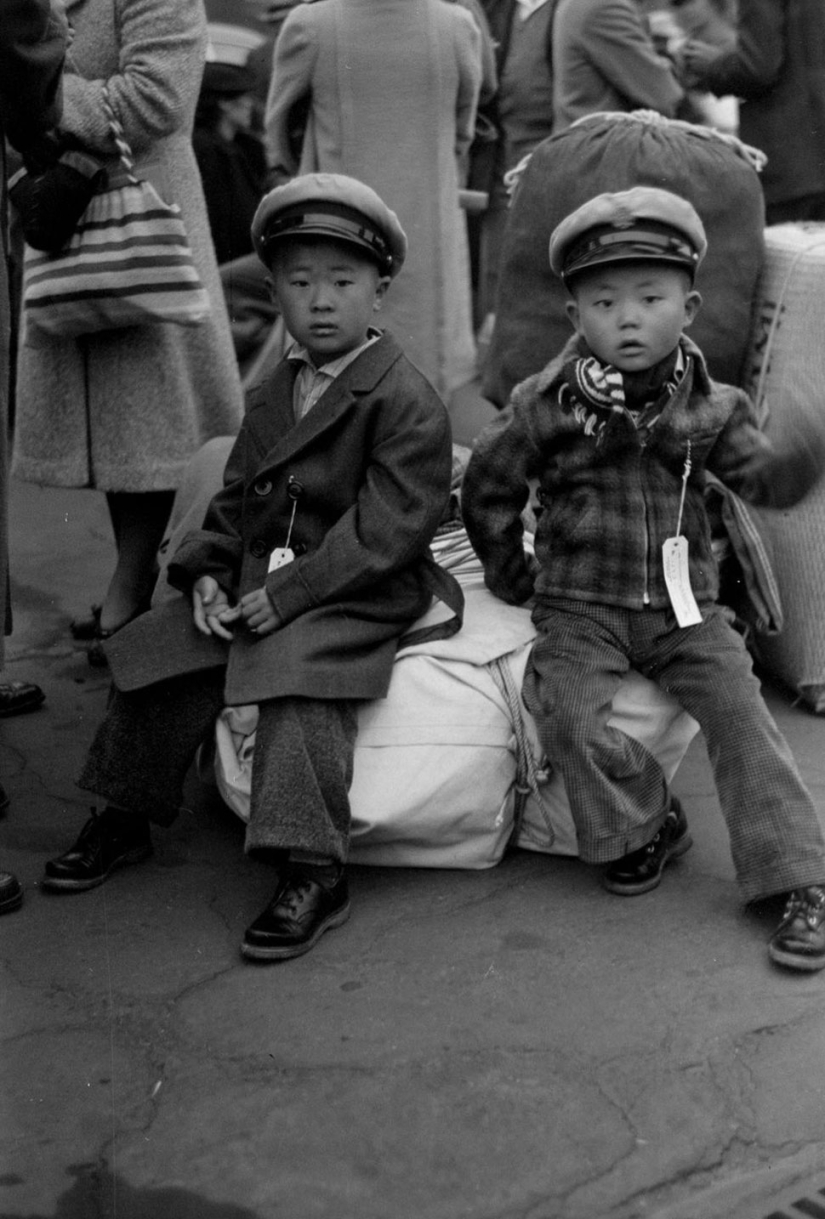
Mary Matsuda Grunewald
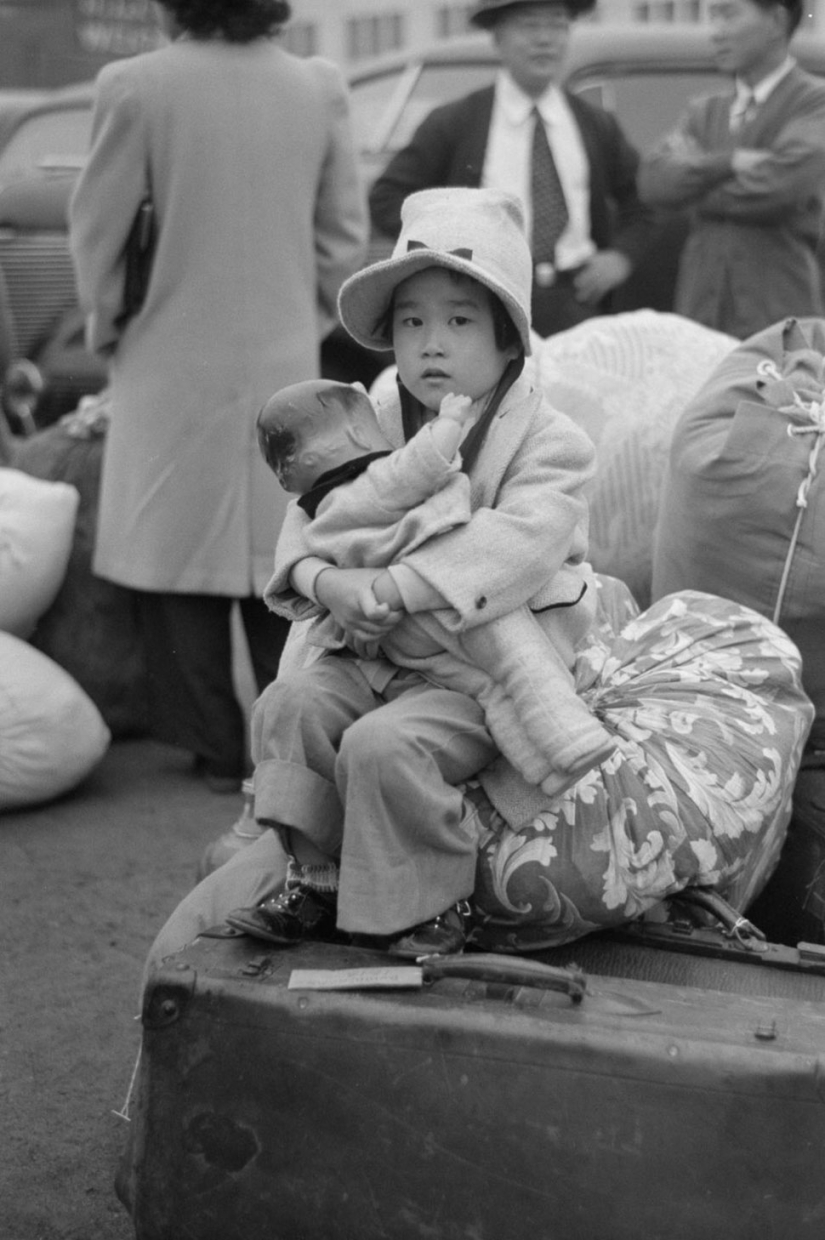

Japanese Americans travel by train to the collection center.
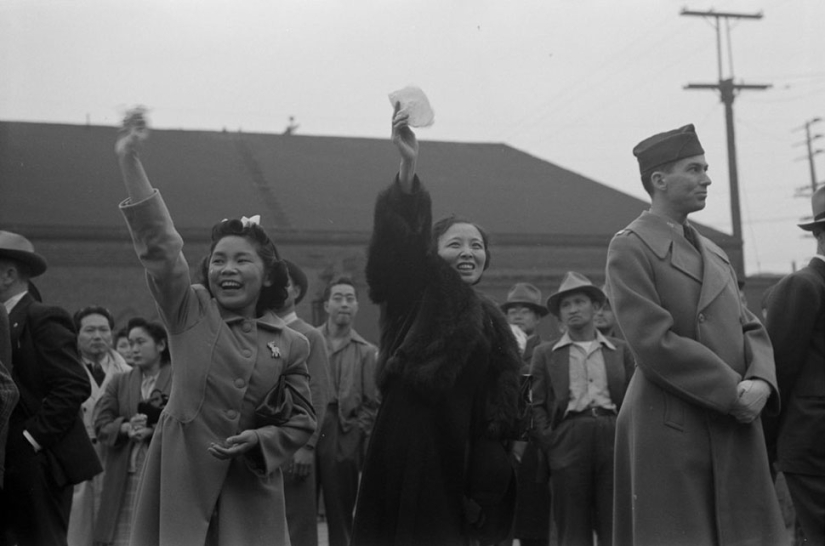
Migrants wave goodbye to their relatives and friends before leaving for the Owens Valley.
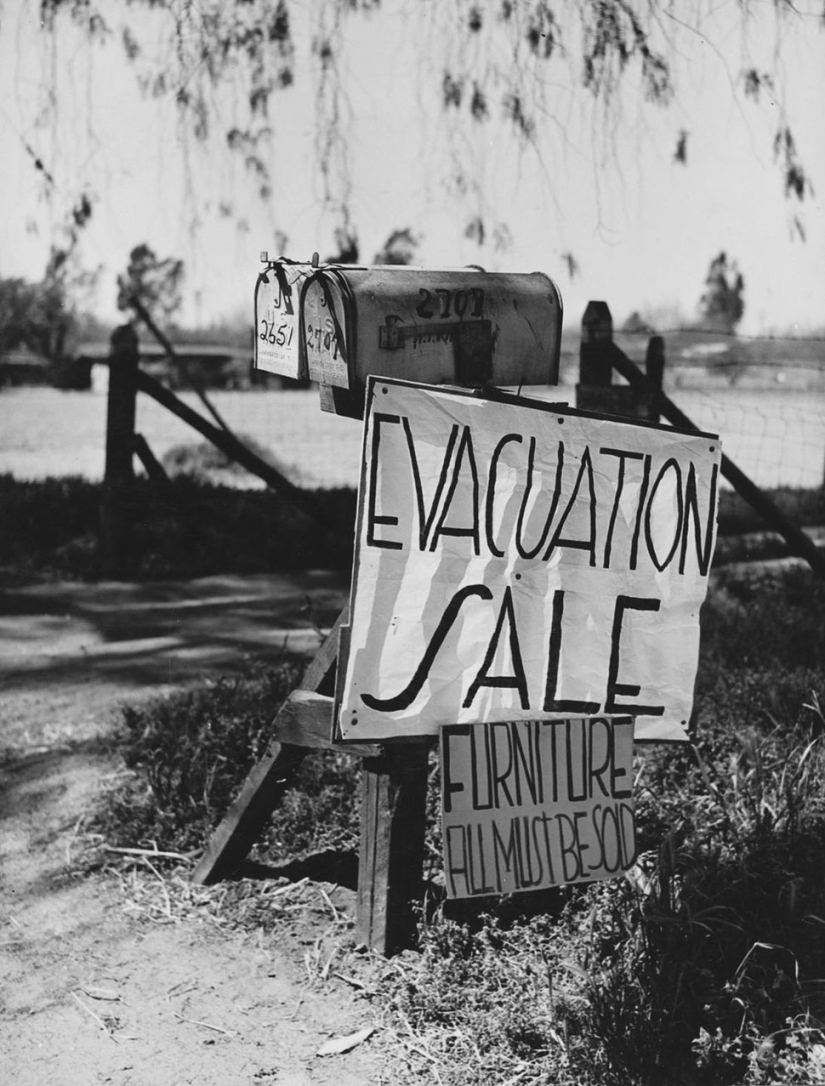
"Sale on the occasion of evacuation. All the furniture must be sold."
Keywords: World War II | USA | Japan | Japanese
Post News ArticleRecent articles

I want to somehow distract myself from the news about the pandemic and plunge into the beautiful. Here, for example, is a story ...

True humanity is revealed in large-scale achievements and resolution of global problems and the daily actions and an open soul for ...
Related articles

Horror is a genre of cinema that has become a springboard into the big cinema of many venerable Hollywood actors. Laurence ...

The symbol of the island of Sicily — treskilion, represents three joined legs bent at the knees, with the head of the Gorgon ...

General Dmitry Karbyshev — one of the Soviet commanders who performed his duty to the end. This man was captured in the battle, ...

At first glance, these colorful works look like ordinary paintings - but upon closer inspection, it turns out that they are made... ...